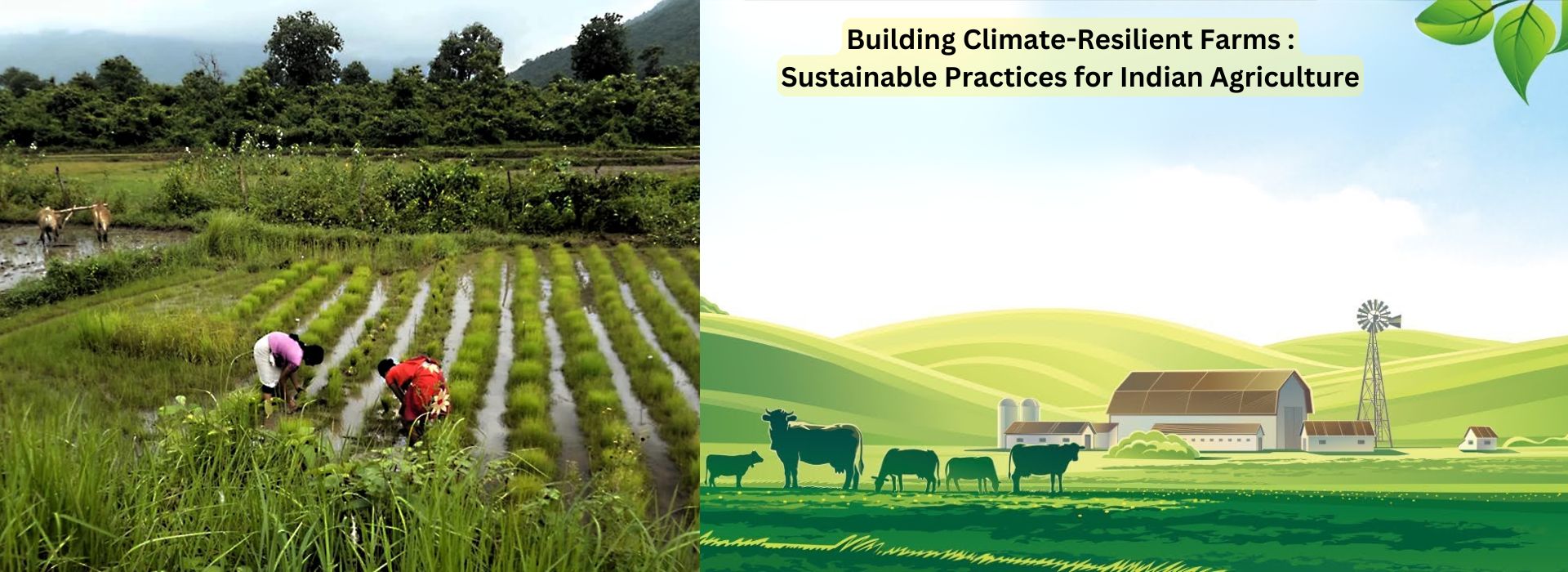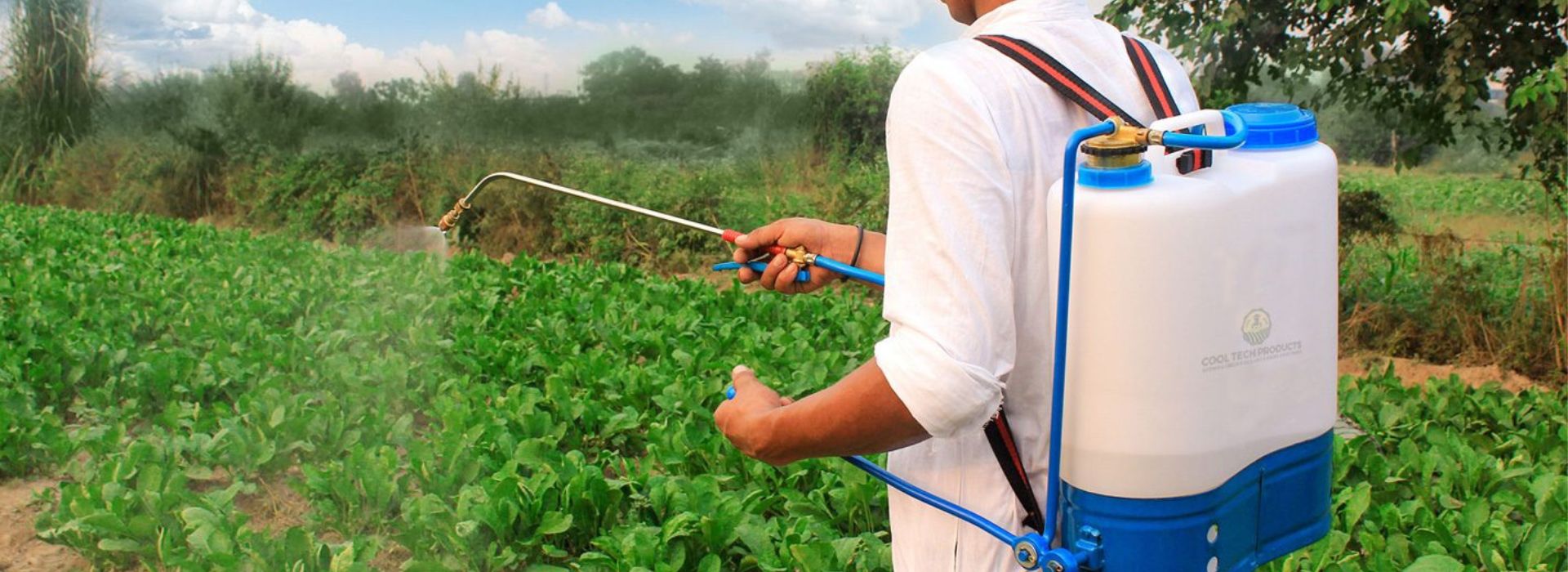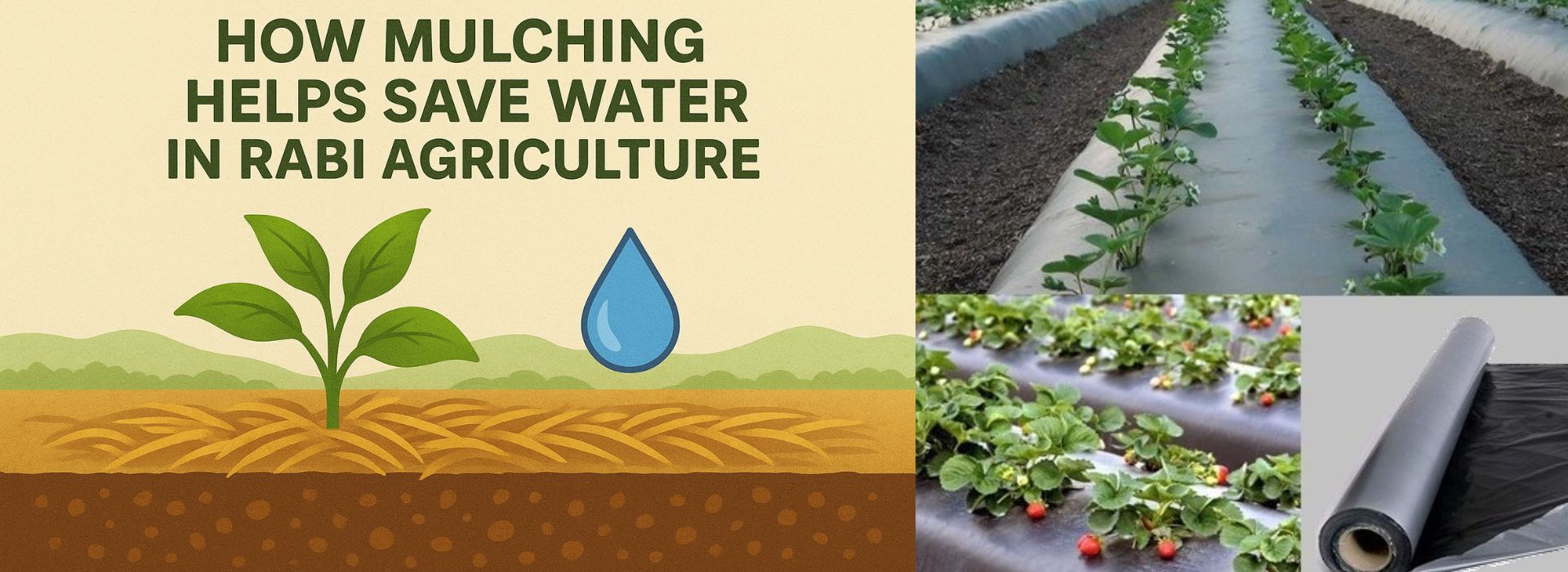Building Climate-Resilient Farms: Sustainable Practices for Indian Agriculture
June 24, 2025Building Climate-Resilient Farms: Sustainable Practices for
Indian Agriculture
India’s agricultural sector—often
described as the backbone of the economy—is increasingly vulnerable to the
harsh realities of climate change. Rising temperatures, erratic rainfall,
prolonged droughts, and frequent floods are disrupting crop cycles and affecting
food security. To safeguard the livelihoods of millions of farmers and ensure
sustainable food production, it's imperative to adopt climate-resilient
farming practices. This blog explores practical and effective strategies to
help Indian agriculture withstand and adapt to the changing climate.
Understanding Climate-Resilient Farming
Climate-resilient farming refers
to agricultural methods designed to withstand climate shocks, reduce
environmental impact, and enhance sustainability. These practices
not only mitigate the effects of climate change but also improve farm
productivity and income stability.
Why India Needs Climate-Resilient Agriculture
- High Dependence on Rainfed Agriculture:
Around 60% of India’s cultivated area is rainfed, making it extremely
sensitive to unpredictable monsoons.
- Smallholder Farming: A majority of Indian
farmers operate on small plots of land with limited resources, making them
more vulnerable to climate-induced losses.
- Declining Soil Health and Water Resources:
Intensive farming has led to soil degradation and groundwater depletion,
further weakening the resilience of Indian farms.
Sustainable and Climate-Resilient Practices for Indian
Farmers
Here are some of the most
impactful climate-resilient techniques already gaining momentum across India:
1. Crop Diversification
- Why it works: Growing a variety of crops
reduces dependency on a single crop and spreads the risk of
climate-related failure.
- Example: Combining cereals with legumes or
vegetables improves soil fertility and food security.
2. Drought-Resistant Crop
Varieties
- Adaptation strategy: Use of high-yielding,
drought-tolerant, or flood-tolerant seeds developed by agricultural
research institutions.
- Example: Varieties like DRR Dhan 42
(drought-resistant rice) and Kufri Surya (heat-tolerant potato)
help maintain yields under extreme conditions.
3. Soil Health Management
- Practices: Incorporating organic matter,
compost, cover crops, and minimal tillage techniques.
- Benefits: Improved water retention, enhanced
fertility, and reduced carbon emissions.
4. Water-Efficient Irrigation
- Techniques: Drip and sprinkler irrigation
systems optimize water use and minimize wastage.
- Impact: Crucial for water-scarce regions
like Rajasthan and Maharashtra, reducing stress on groundwater sources.
5. Agroforestry
- What it is: Integrating trees with crops or
livestock.
- Benefits: Increases biodiversity, stabilizes
microclimates, provides additional income through timber or fruit, and
enhances soil quality.
6. Integrated Pest and
Nutrient Management (IPNM)
- Method: Combines biological, organic, and
chemical approaches for optimal pest control and soil nutrition.
- Result: Reduces dependency on chemical
pesticides, lowers production costs, and supports ecosystem health.
7. Climate Information and
Forecasting Tools
- Use: Mobile apps and government portals
provide weather forecasts, sowing dates, and crop advisories.
- Example: The Kisan Suvidha app helps
farmers plan better and avoid climate-related crop losses.
8. Organic and Natural Farming
- Sustainability model: Emphasizes local
inputs, biodiversity, and minimal external interventions.
- Prominent initiative: Zero Budget Natural
Farming (ZBNF) in Andhra Pradesh is a successful example of
climate-resilient farming with reduced costs.
Government Initiatives Supporting Climate-Resilient Farming
- National Mission for Sustainable Agriculture
(NMSA): Promotes sustainable practices and efficient resource
management.
- Paramparagat Krishi Vikas Yojana (PKVY):
Supports organic farming and capacity building.
- Soil Health Card Scheme: Provides farmers
with information on soil condition to guide nutrient management.
The Road Ahead: Empowering Farmers for Climate Action
For widespread adoption of
climate-resilient farming, the following steps are critical:
- Capacity Building: Training farmers through
local Krishi Vigyan Kendras (KVKs) and NGOs.
- Financial Support: Access to credit,
subsidies for sustainable inputs, and crop insurance.
- Technology Access: Promoting mobile-based
tools, AI in agriculture, and weather forecasting systems.
- Public-Private Partnerships: Collaboration
between government bodies, startups, and agribusinesses to scale resilient
practices.
Conclusion
As climate change continues to
challenge Indian agriculture, building climate-resilient farms is not a
choice—it’s a necessity. By combining traditional knowledge with modern
techniques, and empowering farmers with tools, training, and technology, India can
secure its food future while protecting the environment. Sustainable farming
isn’t just about survival—it’s about thriving, even in the face of adversity.
At krishibazaar.in, you
can find and buy various agricultural products. For agricultural guidance on
selecting the most suitable products for your crops, please contact or WhatsApp
at +917887880887.






Guest reviews
No reviews found for this Blog